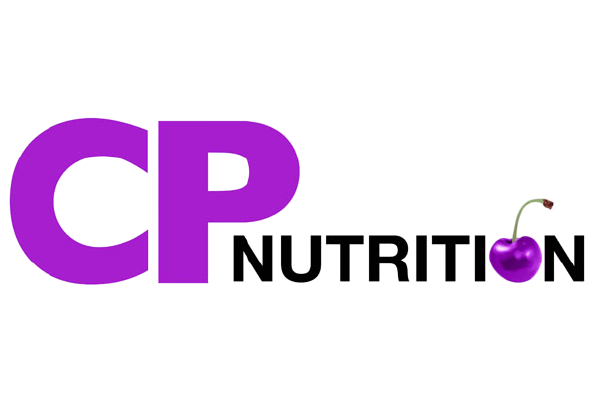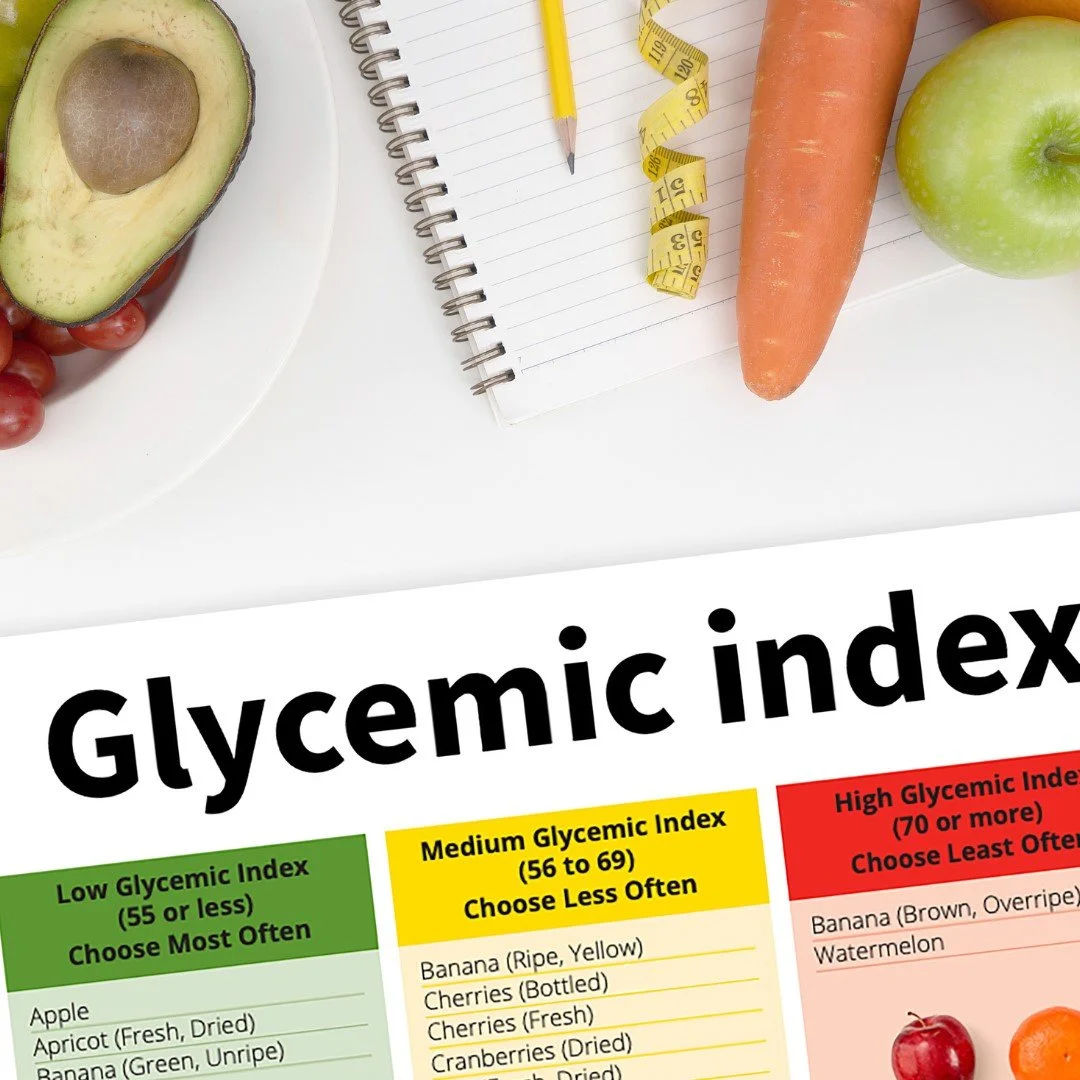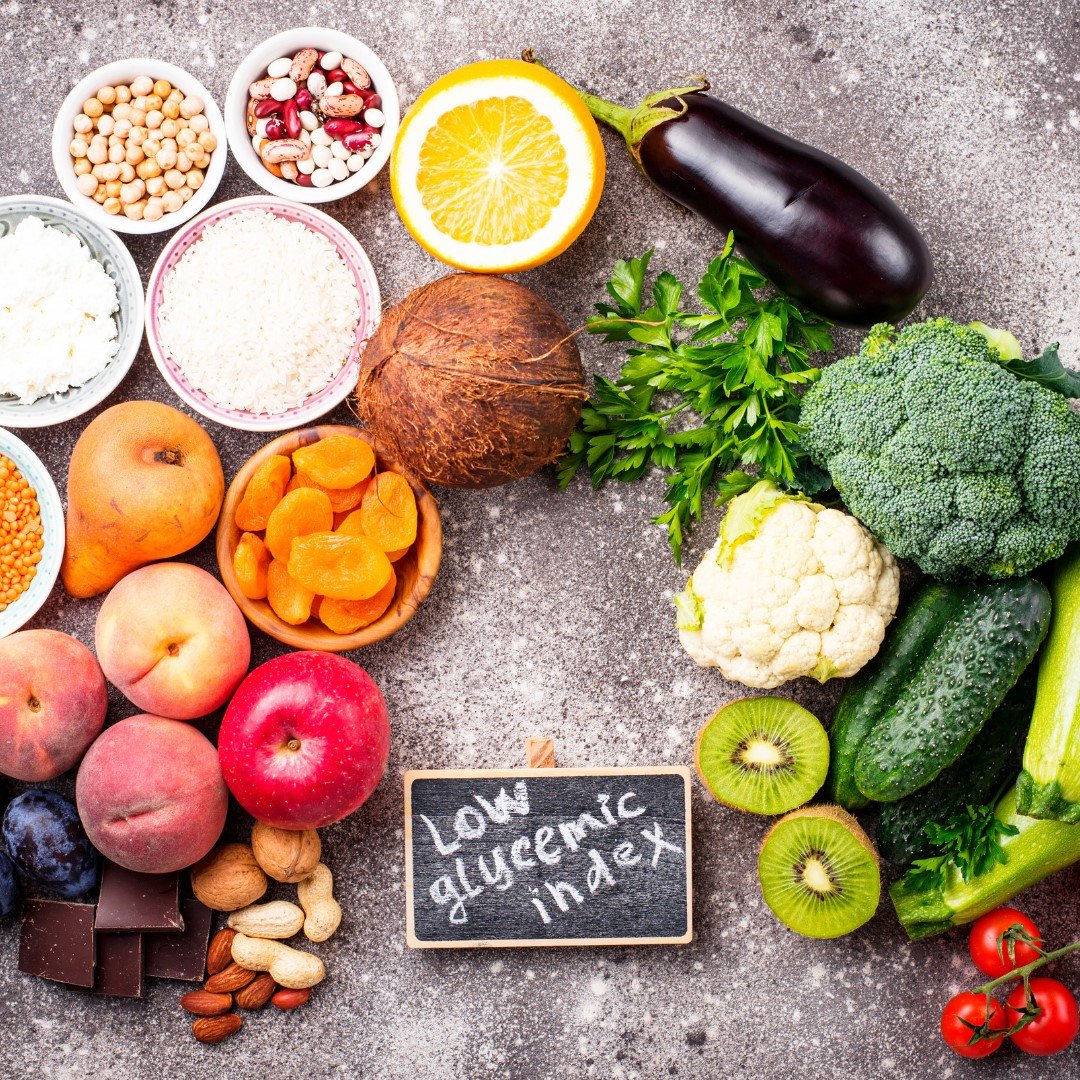Low GI foods for PCOS: Can they really help insulin resistance?
Do you feel you are constantly searching for the best diet for PCOS? Spoiler alert. There isn't a single best way of eating for PCOS. However, one of the most researched diets in managing PCOS is a low glycemic index (GI) diet. That’s because beneficial effects have been observed in managing numerous PCOS symptoms, such as insulin resistance, carbohydrate cravings, and potentially even infertility (1, 2, 3, 4). In this blog post, we’ll explore the evidence behind these links and highlight some examples of the best low GI foods for PCOS. Let’s dive in.
PCOS symptoms
There are a variety of symptoms associated with PCOS including acne, oily skin, rapid weight gain, irregular periods, difficulty getting pregnant, excess hair growth and hair loss on the head (5). Although there is no cure for PCOS, the symptoms of PCOS can be improved by dietary and lifestyle changes, one of which is the fairly well researched low GI diet and its effect on improving insulin resistance.
PCOS and insulin resistance
Insulin is a hormone which helps the body to use energy, in the form of glucose, from food. Lots of people with PCOS are insulin resistant and therefore have more insulin in their blood to compensate (6). Some studies suggest that low GI diets improve insulin sensitivity (1), which could improve blood sugar control and associated PCOS symptoms (1).
What is Glycemic Index (GI)?
The GI is a ranking system which indicates how quickly your blood sugar rises after eating different carbohydrates. Generally, low GI foods are digested and absorbed into the blood more slowly and cause a gradual rise in blood sugar levels, compared to high GI foods which are broken down quickly and cause a rapid increase in blood sugar levels (7).
The GI scale runs from 0 to 100, with 100 being pure glucose, causing the biggest spike in blood glucose. Specific GI values and their equivalent rankings are given below:
Low GI = < 55
Medium GI = 56-69
High GI = > 70
What makes a food low or high GI?
As with many things diet-related, what makes a food high or low in GI is complex and dependent on multiple factors (8). Factors that impact the GI of food include:
Nutritional content Foods that contain nutrients such as fibre, fat and protein lower the GI of foods as the digestion and absorption of these nutrients slows the digestion and absorption of glucose. So individual foods, as well as overall meals, with a lower carbohydrate content and higher protein, fibre or fat content are likely to have a lower GI.
Food processing Processing grain products such as bread, pasta and rice, increases their GI. Therefore, opting for whole grain alternatives such as whole grain bread, pasta and rice, is a smart move if you want to follow a low GI diet.
Cooking time The longer a food is cooked for, tends to increase GI as heat breaks down the carbohydrates in food making them faster to digest and absorb. For example, al dente pasta has a lower GI than softer pasta.
Cooking method Frying or roasting with oil will decrease the GI of foods, compared to boiling, as you are adding fat which will alter the way the food is broken down in the body.
Ripeness in the case of fresh produce like fruit, the riper the fruit, the higher the GI, as the sugars in ripe fruit are more readily available for digestion and absorption.
Evidence of low GI foods for PCOS
One recent meta-analysis (a type of study combining lots of research in one particular area) reviewing eight studies found that a low GI diet may play a significant role in improving PCOS symptoms, such as acne, body hair and emotional health (2). Another systematic review and meta-analysis reviewing eight trials found a low GI diet to improve biochemical features of PCOS such as glucose regulation, insulin sensitivity, blood cholesterol and testosterone (3). One trial of 96 women with PCOS found that those who followed a low-GI diet for twelve months also had improved diet-metformin interaction and menstrual cyclicity compared to those following a conventionally healthy diet (1). Although more evidence is required to definitively recommend a low GI diet for all people with PCOS, all the evidence is positive, and there are no observed harmful effects of following a low GI diet.
Types of food with low and high GI
Low GI foods for PCOS include non-starchy vegetables, some fruits like berries and apples, pulses and wholegrains. More examples can be seen in the table below which you may want to include in your diet.
High GI foods include sugary foods and drinks, potatoes, white bread and white rice (8). If you choose to follow a low GI diet then you may want to reduce the amount and frequency of which you eat these foods.
Limitations of a low GI diet
Although looking at low GI foods may be useful, in some instances it can be misleading. Some foods with a high GI may be more nutrient dense than a low GI food. For example, crisps vs. potatoes, and chocolate vs. watermelon. Both crisps and chocolate have a lower GI compared to potatoes and watermelon which both have a higher GI. This is because of the fat content in chocolate and crisps which slows the release of glucose into the bloodstream. It may therefore be beneficial to also consider the other nutrients in foods such as fat, protein and fibre. High fibre foods have been shown to definitively improve blood glucose control, blood cholesterol, healthy bowel movements and keep you fuller for longer (9). Importantly, we also need to consider that we don’t tend to eat individual foods on their own, but as part of a meal or snack, and combining carbohydrate based foods with foods containing protein, fats or fibre will reduce the glycemic load of the meal/snack overall.
Low GI meal plan
Breakfast: Muesli, yoghurt and berries
Swap your morning cereal for a low/ no added sugar, high fibre alternative, such as muesli. Serve with healthy fats and protein such as full fat yoghurt and nuts to reduce the GI of the meal.
Lunch: Chicken and avocado pita
Increase the amount of healthy fats in your lunch by adding avocado. Aswell as nutritious value, it adds a lovely creamy texture. Swap white pita bread for a wholemeal alternative to increase the fibre and reduce the GI.
Dinner: Sausage and bean casserole
Throw all your favourite root vegetables such as carrots, onions, celery and parsnip, into an oven proof dish (or slow cooker) with stock, a tin of tomatoes, butter beans and sausages. Cook for a few hours allowing all the different flavours to combine.
Have a go at experimenting with some of the other examples of low GI ingredients to come up with your own daily meal plan!
The Low Down on Low GI
To summarise, GI is a ranking system which indicates how quickly your blood sugar rises after eating different carbohydrate foods. Consuming a low GI diet has been shown to increase insulin sensitivity, mental health and decrease acne in people with PCOS. Therefore, choosing low GI, high fibre foods like beans, lentils, chickpeas, brown pasta and rice, whole grain bread, fruits and vegetables as the ‘base’ of the majority of your meals may be beneficial for your PCOS symptom management. Although more evidence is required to recommend a low GI diet for all people with PCOS, it may be a good strategy to try for some.
Why not try experimenting with some low GI foods and see what works for you. If you need further support then contact me to book a free discovery call to find out more about working 1:1 with me.
For further information about diet and PCOS, please visit: Low GI diet for PCOS .
References




